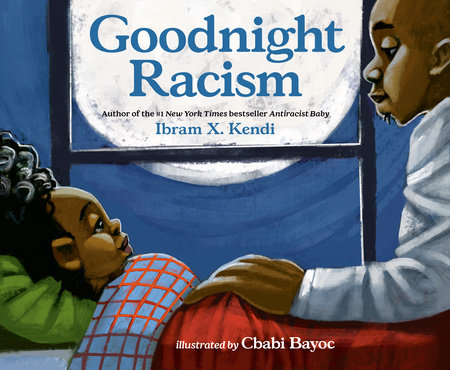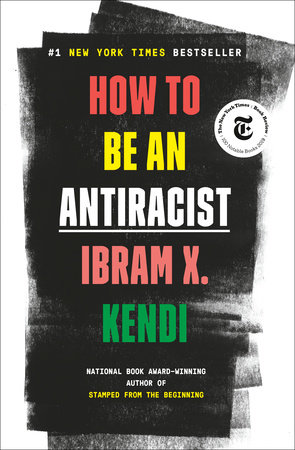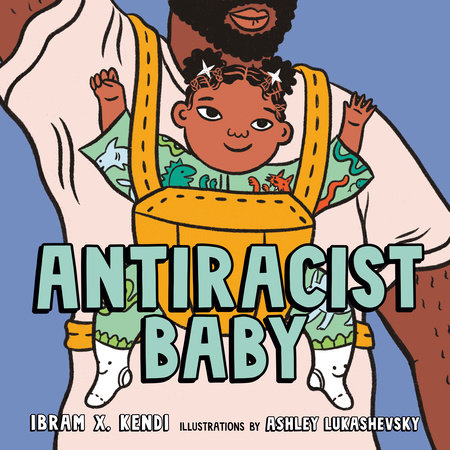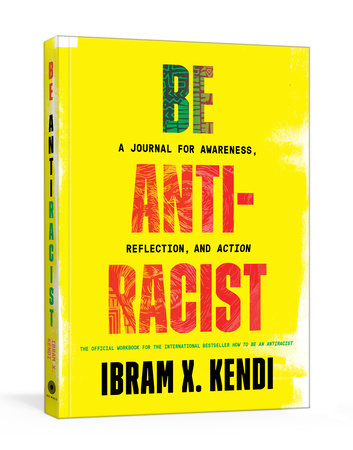Dr. Ibram X. Kendi on Raising Antiracist Children
by Sarah Mangiola
Dr. Ibram X. Kendi is one of America’s leading antiracist scholars. Following the murder of George Floyd by law enforcement in May 2020 and the increase of Black Lives Matter protests worldwide, his 2019 book How to Be an Antiracist found a new audience amongst people wanting to further educate themselves about systemic racism and how to actively be antiracist. Since then, Dr. Kendi has published Antiracist Baby Picture Book for kids, which outlines antiracism steps for kids to take themselves. Now, he’s back with two newly published books: How to Raise an Antiracist, a parenting book, and Goodnight Racism, a bedtime book that encourages children to imagine a better future.
Brightly had the opportunity to speak with Dr. Kendi about his new books, what he’s learned from raising his own daughter, and how to address racist ideas with your children.
Brightly: Your previous companion titles, including How to Be an Antiracist and Antiracist Baby, have left such a mark on society and how we understand what it is to be actively antiracist and why it’s not enough to be not racist. How will How to Raise an Antiracist instruct parents and caregivers on how to raise antiracist children?
Dr. Kendi: First, I think it is important for parents, teachers, and other caregivers to understand that it is never too early and it is never too late to really start the process of raising a child to be antiracist. To be antiracist is to recognize that all of the racial groups and all the people with different colors and cultures are equals. To be antiracist is to see the problem, the racial problem, like it is a “bad rule.” Kids know all about bad rules, like the time in which they are asked to go to bed. The problem is bad rules, not necessarily bad people.
Every child is different, every parent is different, every environment is different, so one of the things I tried to do with How to Raise an Antiracist was allow parents [and educators] to understand what the research shows, how children are experiencing [and thinking about] race at different ages.
That is why I organized the book according to developmental level. The sort of basis of each chapter was what a child is thinking about [in terms of] skin color or race or racism at different ages. And then throughout that I also had very specific tips. For instance, it’s incredibly important to ensure our children are living in a diverse environment. [I also cover] the importance of raising a critical [and empathetic] thinker, and the critical importance of engaging with our kids when they ask questions about race.
That is so important, and I think setting up the book by age and stage is so useful and tangible. Do you have any specific advice for parents introducing antiracist principles and thinking to their children for the first time at an older age, like middle school or high school?
For middle school and high school, I think you should assume as a parent that your child can see racial disparities and inequities. And if no one, [be it their teachers or parents], has ever talked to them about racism being the cause of those disparities, then chances are they may actually think those disparities are the result of the behaviors or even the cultures of people who have less.
I am mentioning that because I think it is important for parents to understand where their child is coming from. So, then I think it becomes incumbent upon the caregiver to really flush out the ideas that their child might have – asking them questions about their ideas [in order] to provide books for them or take them to places in which they can see racism, and understand it, and spark conversations so they can understand what a rule is, what a policy is, what a structure is. Middle school and high school students can understand that.
It makes a lot of sense to see what information level they’re starting with and go from there, and to really have an open and honest conversation about it with kids. If you’re a parent or caregiver, you would know where they’re starting, but kids are exposed to so many things outside of the house as well. You and your partner are raising your own child. How did you model some of the tips for raising younger children to be antiracist from your own experience parenting?
When I talk about raising our children in a sort of heterogeneous environment, what I mean by that is not just the schools or the daycares or the neighborhoods, but even their toy box. We try to get our daughter different looking toys and books [featuring characters that don’t necessarily look like her]. My daughter has picture books that are about Asian girls and Muslim girls and Latinx boys and Native children and people, as well as books about Black people and books with white characters. We’ve been very deliberate about her reading about Islamophobia through picture books or about ideas that suggest there is something wrong with the way Asian people’s eyes are shaped, so she can see that there is nothing wrong with the way different people’s eyes are shaped or a girl who wears a hijab or an immigrant. Whenever she has asked questions about race, we’ve tried our hardest to not stop the conversation by saying “don’t ask about that” or “don’t say that.” We’ve tried to answer her questions.
I agree that children have a lot of questions and it’s important to be open and honest when answering them. Books are a great tool for introducing children to these topics, especially around equality and inclusion. I also want to talk about your new children’s book Goodnight Racism. I love Antiracist Baby and it is such a great introduction for kids – giving them tangible steps to become antiracist like seeing skin colors, celebrating our differences, and admitting when you do have racist ideas. In Goodnight Racism, you empower kids with important messages about justice and equality. What do you hope children gain from your new book?
What I really hope is that children are able to unlock their imagination about what a different world could be. A different world where no one is hungry, a different world where everyone belongs no matter who they love, no matter where they worship, no matter what they look like. A different world where we have an antiracist society, where we have equity and justice for all. I just think it is important for us as human beings to begin imagining a different world as early as possible so that we can bring it into being and I am just excited that Goodnight Racism sort of does that. Also, as a parent I am excited to have another book that will encourage our kids to go to sleep.
Absolutely, it is great to pair those two things together. In terms of other books and resources besides your own, when parents are seeking to instill these principles in their children at an early age, do you have any other recommendations that you want to share with our readers?
With How to Raise an Antiracist, I think one of the things that I was very purposeful in doing was recommending different books and different authors for different ages. There is almost a book list within my book that I was very deliberate in sort of crafting. And there are a whole host of titles — board books, picture books, middle grade, and YA — that I would encourage teachers and parents to check out.
To go a little further into addressing racism at home, do you have any tips for the conversations parents can have with kids if they are witnessing or expressing racist ideas themselves at school or elsewhere.
I think that it is important for parents to do two things, particularly if the child has expressed [a racist idea] and/or the child has agreed with that idea. Firstly, for the parent to ask the child, for example, “why do you think that about Black people?” And many kids will say “I don’t know.” Or they’ll say, “I heard someone else say that.” And depending on what they say, you can really try to get at the source of it because you want to basically explain to them that it is not a true idea, but it is hard to talk about that without understanding where they may be coming from.
You should secondarily ask of your child, for example, “How do you think that idea makes Black people feel?” And that does two things: First, you are nurturing their empathy for Black people, or Latinx people, or white people, whoever they are saying this idea about. And the more we can nurture empathy with our children, for other racial groups, the less likely they are to internalize these sorts of prejudicial ideas. Just have that conversation: “How would you feel if someone said that about someone like you? About someone like us?” You should talk to them about the idea itself, and how and why it is not true. You should talk to them from the standpoint of allowing them to gain empathy from the people that they may be looking down upon.
Agreed. A reactive response to a child coming home and repeating something racist that they heard at school would be for a parent to reply, “you shouldn’t say things like that, don’t say things like that,” but I think expressing and talking about it in this way will encourage the child to think about why they should not say something like that and why that is also not true. It is very good advice for parents.
And it is important because when we say as parents “don’t say that,” what many times our kids hear, particularly teenagers hear, is “okay I’m just not going to say that to my parents.” And we want to know what our kids are thinking about race so, when necessary, we can allow them to see how those ideas are racist and how they can adopt the more antiracist opposite.
Editor’s Note: This interview has been edited and condensed for clarity.
-
More Books by Dr. Kendi
-
How to Be an Antiracist
Also available from:Antiracist Baby Picture Book
Also available from:Be Antiracist
Also available from:Four Hundred Souls
Also available from:






